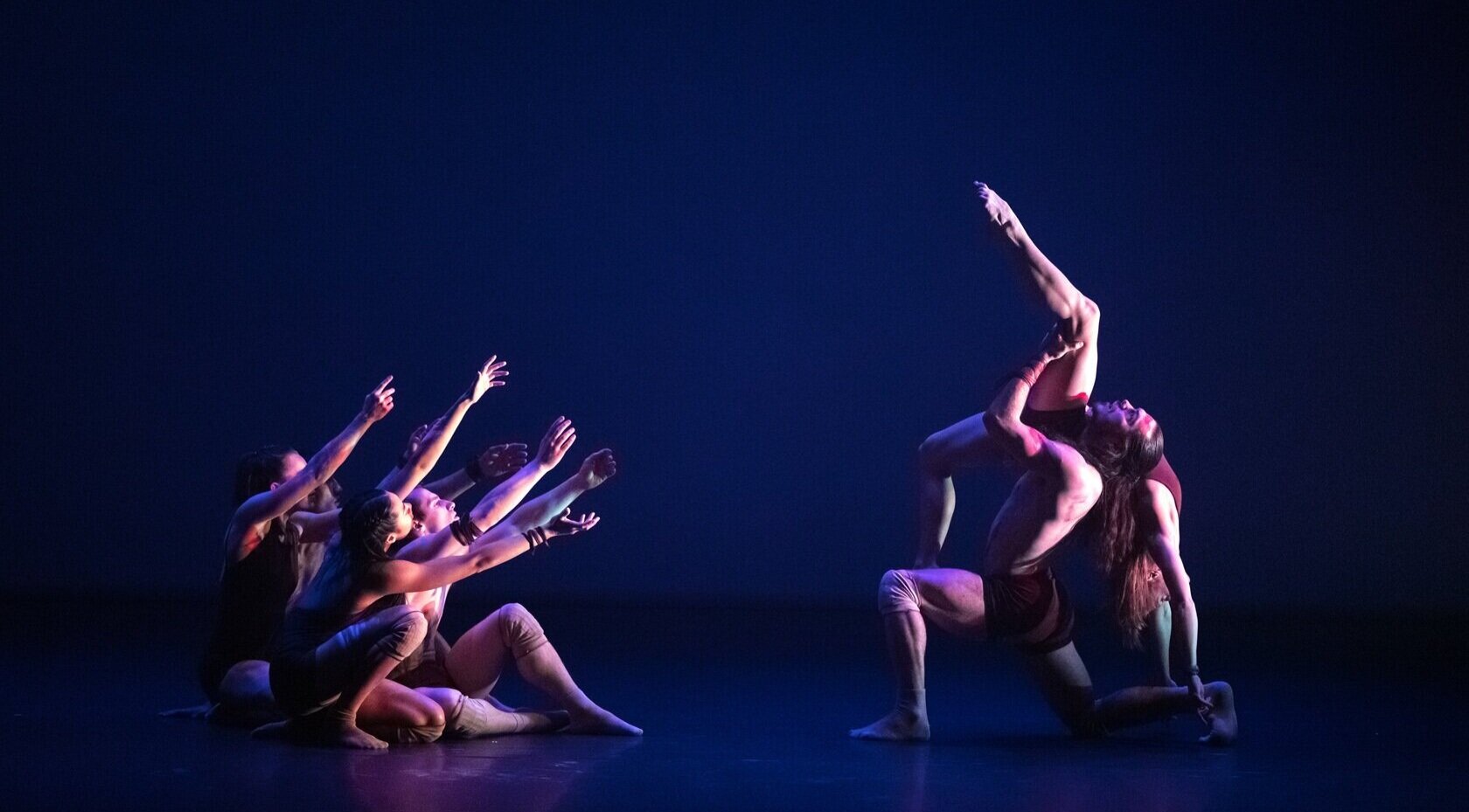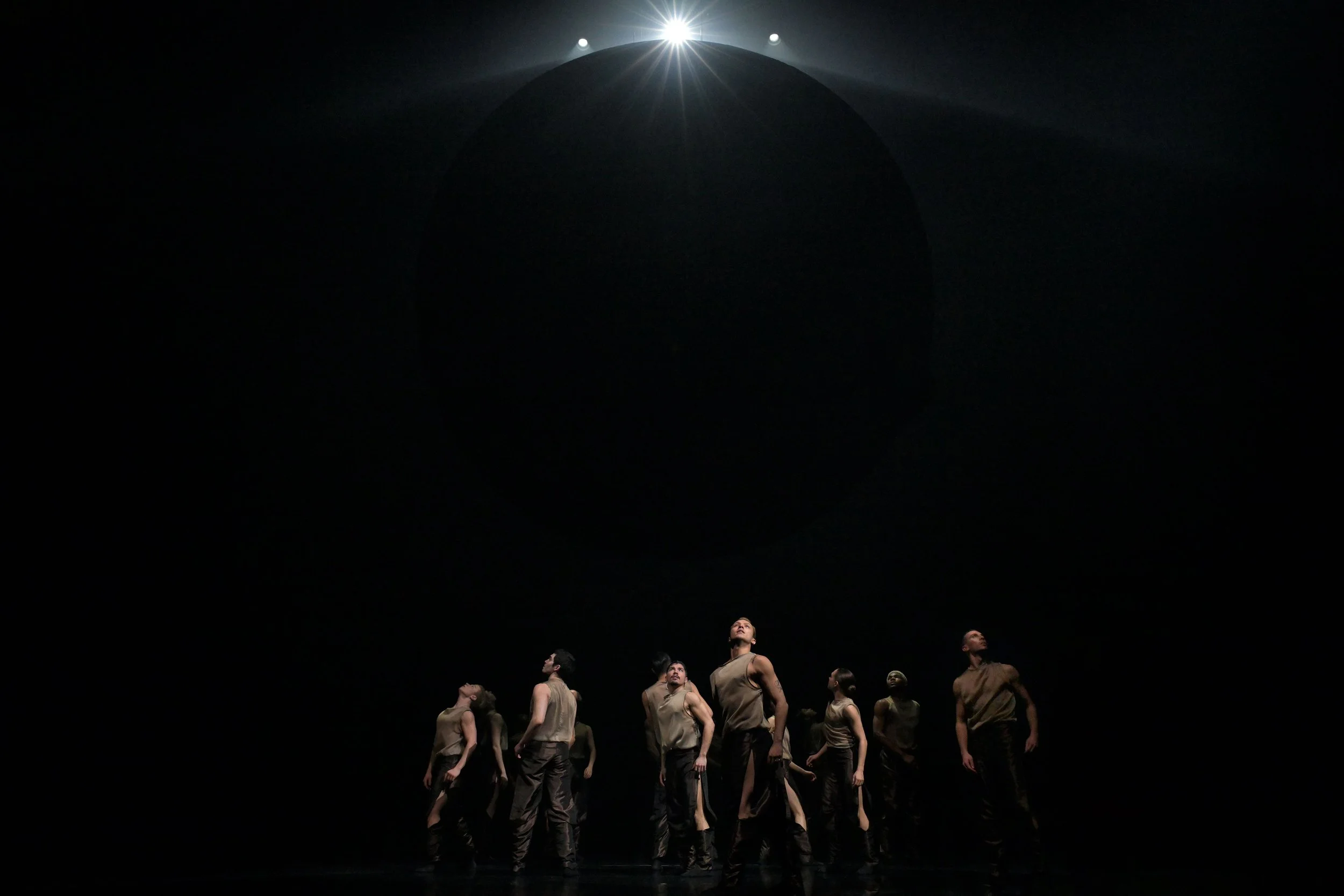Dance review: Red Sky Performance—More Than Dance, We Are A Movement mesmerizes
The streaming Digidance film celebrates the Indigenous performance company’s 20th anniversary
Red Sky Performance Miigis. Photo by Joanna Stoga/NFM
Digidance presents Red Sky Performance: More Than Dance—We Are A Movement, streaming to April 20.
THE KNEE PADS that dancers from Red Sky Performance wear in Miigis aren’t all that noticeable, but it swiftly becomes clear why they’re necessary: the ensemble piece is intensely physical. Whether the performers are moving as a single entity, lurching from side to side as if plying choppy waters, or trudging forward in unison as if facing a storm, their movements are highly athletic—and yet fluidly beautiful at the same time. And within so much power is serenity, all set to original music with stirring vocal harmonies that drive straight to the heart.
Conceived and directed by Red Sky executive and artistic director Sandra Laronde and choreographed by Jera Wolfe, Miigis is based on a symbol of Anishnaabe culture. The miigis shell represents the “the perfect breath” of life and informs this First Nation’s origin story from the Atlantic Coast to the Great Lakes.
Utterly mesmerizing, excerpts of Miigis feature in the new Digidance production Red Sky Performance—More Than Dance, We Are a Movement. The film, now streaming, includes interviews with Laronde and Wolfe as well as “social activator” Jules McCusker; vocalist Jen Brousseau; composer in residence Eliot Britton, and elder Dr. Duke Redbird. Each has insightful things to say about being part of Red Sky or the impact the company has had—and continues to have—in representing and elevating Indigenous culture.
This digital encapsulation of its two decades illustrates how Red Sky is about much more than performance; its artistry is story, identity, meaning, knowledge, history, prayer, medicine, energy, and inspiration.
Both Miigis and the company’s other work featured in the film, Trace, reflect Indigenous resilience and strength.
With a feel that’s otherworldly and timeless, Trace explores Anishinaabe star and night-sky stories, opening with a cluster of dancers who evoke yearning, searching, and discovery against a backdrop of a black sphere surrounded by blue-green orb. Later, against darkness, what appear to be so many stars falling to the ground are in fact letters of the alphabet, perhaps speaking to the power of words and the loss of Indigenous legends and languages as a result of colonialism. Throughout, the dancers’ energy shifts from tender and sensual to pulsing and percussive. A duet for two men, set to a rapid primal beat, has a transfixing urgency.
The galaxy that Trace evokes is mystical and spiritual. When a dancer moves toward the projected Milky Way, held high by the other performers who are barely visible amid the darkness, she seems to be walking on air, willingly being swallowed up by the night sky in perfect calm.
Brief pauses between the work’s excerpts would have made for less abrupt transitions in the film, but that’s a quibble. More than a dance film, this is a celebration of 20 years of performance and a documentation of this moment in the revival of Indigenous culture, and by extension, of reconciliation.
It’s not just powerful and captivating art; it’s vital viewing.














